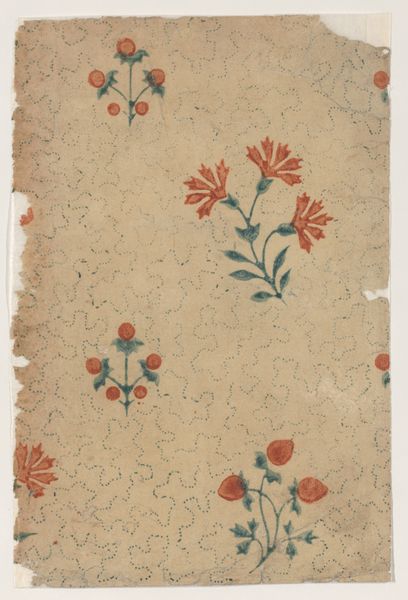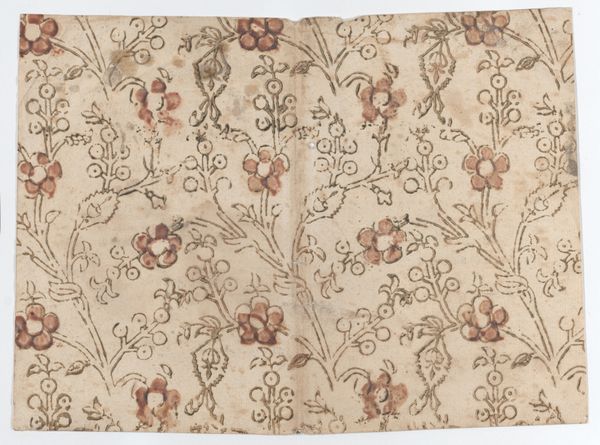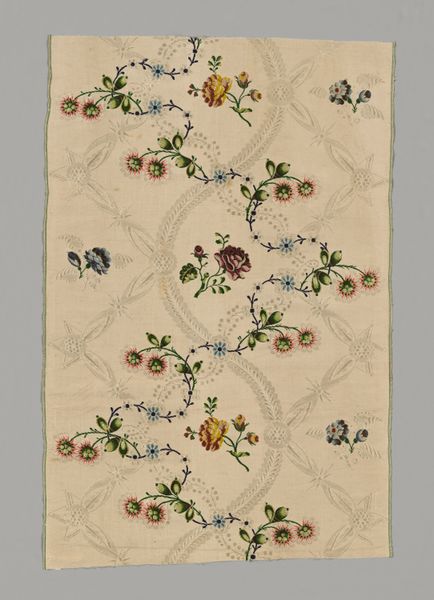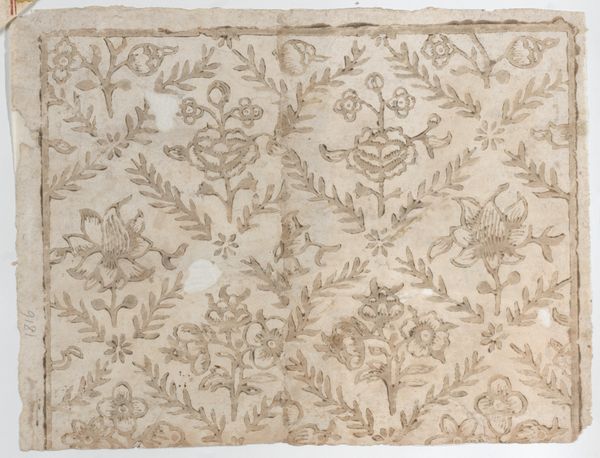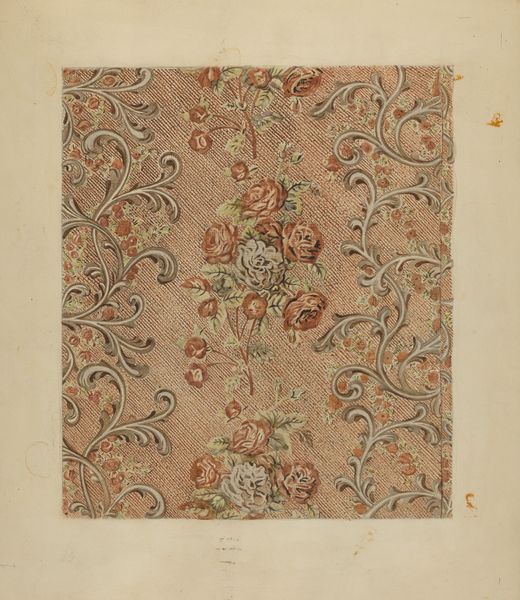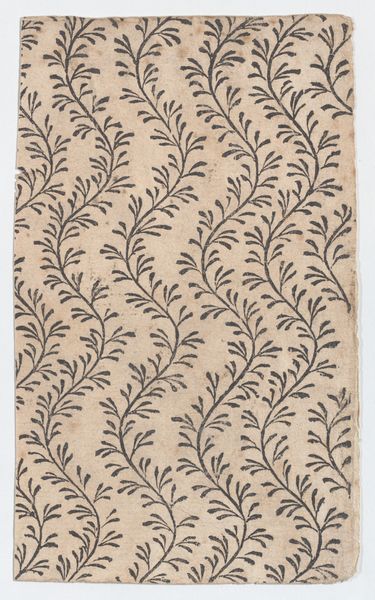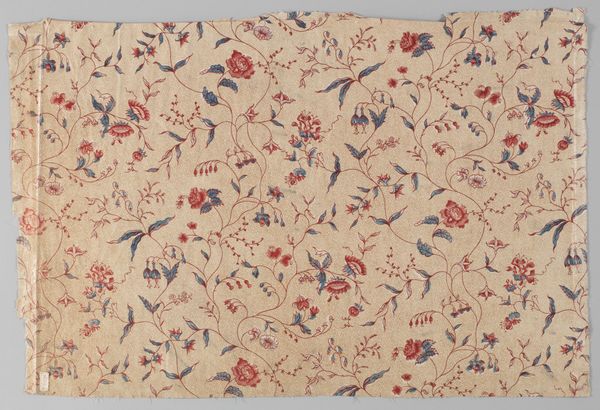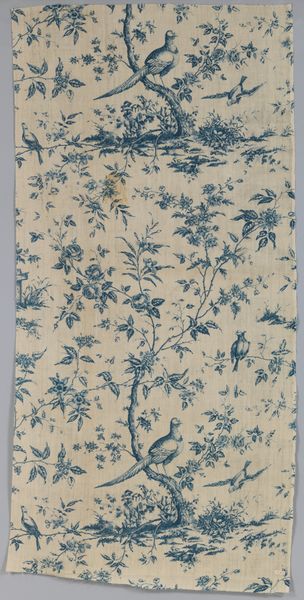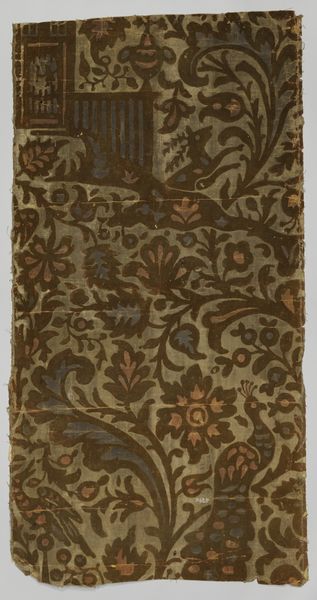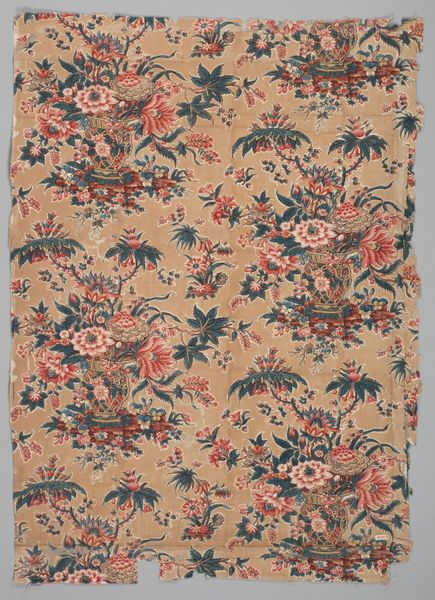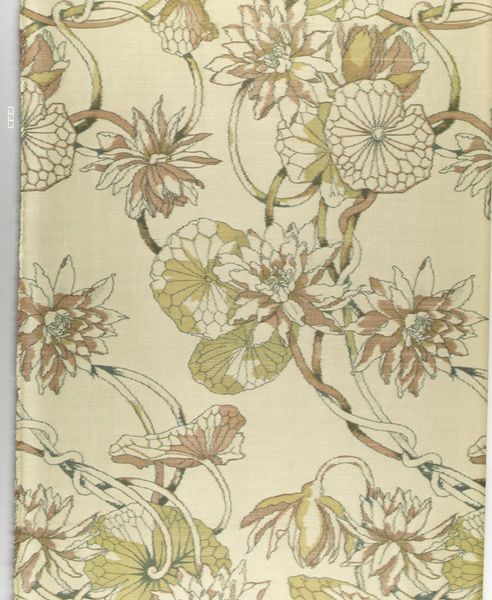
drawing, print, textile, paper, watercolor
#
drawing
#
organic
#
water colours
# print
#
pattern
#
textile
#
paper
#
watercolor
#
stoneware
#
organic pattern
#
decorative-art
Dimensions: Sheet: 6 1/16 × 3 9/16 in. (15.4 × 9 cm)
Copyright: Public Domain
Curator: Ah, this sheet, featuring an overall floral pattern, crafted sometime between 1800 and 1900 by an anonymous hand. It resides here at the Metropolitan Museum of Art. The piece seems to showcase a block-printed textile fragment. Editor: It has the loveliest, quiet feeling, like finding an old letter tucked inside a book. The floral design is both repetitive and surprisingly delicate; it almost makes me think of a forgotten language. Curator: Yes, let's talk process. The very repetition you observed points to an interesting interplay between handcraft and early industrial techniques. Block printing allows for repeated motifs, yet the subtle variations tell us this wasn't a fully automated affair. Labor was definitely part of the process. The pattern almost hints at wallpaper production or textile design for clothing. Editor: And I'm drawn to the earth tones—the muted greens, browns. There's a sense of things fading or aging, of witnessing the beauty in the imperfect. I can almost smell the attic it was stored in, do you know? What was it like to wear that pattern on fabric? To use this in a decorative form? I love the fragment itself - what do we make of something only partly preserved? Curator: Indeed! Considering its purpose offers insights into the lives of people then. Was it purely decorative, perhaps adorning a wall or furniture, or did it serve a more functional role, as part of a garment? Its survival as a fragment only highlights its value now as an historical record of production and cultural values, right? I'm particularly fascinated by the dye choices. The color palette suggests what dyestuffs were available, affordable and deemed fashionable during the period it was made. Editor: You know, there’s also this little tension—the joy of the flowers clashing against the evidence of decay along the edges of the paper, or the foxing spots... But despite the damage it has character, or history. The imperfection *is* the appeal. We read stories into those imperfections that makes us long for it! Curator: Absolutely. Its value to us transcends pure aesthetics; it is in a way an index of socio-economic factors too: the price of materials, labor divisions, commodity culture of decorative prints, that's all embedded here... And that is why this is so worth our looking at! Editor: It seems to hum with quiet stories, like something alive under glass... Curator: Precisely. Now I find I am thinking more broadly. Its power isn't only as decoration, or historical artifact. Now it has achieved icon status. And, frankly, I can't stop staring...
Comments
No comments
Be the first to comment and join the conversation on the ultimate creative platform.

